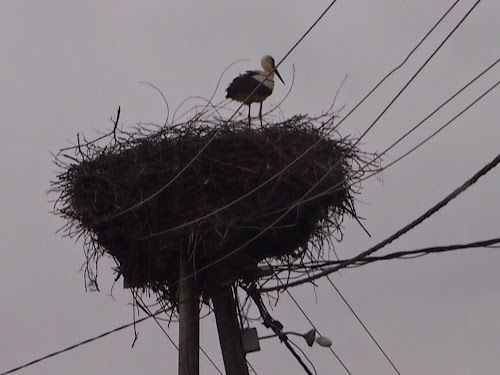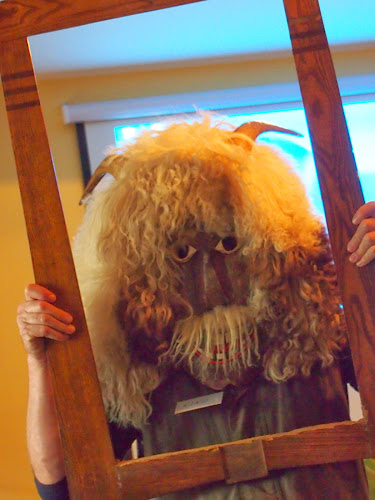A visit to Eastern Europe wouldn’t be complete without sighting a stork. Besides, we thought it would be nice to start out this post with something gentle and upbeat.
The tour proceeded to visit a very funny entrepreneur and his family out in the country. He has brandy and wines and savory treats and cakes for the tourists to try at 10:00 in the morning, plus the all-important toilets. There are displays of fishing gear and crafts and lots of things for sale. Nino puts on a zany presentation in which he manages to actually convey serious information about his country to his unwitting audience. Here he is sporting a Buso mask, asking to be photographed, but which he used to launch into an explanation of the two Battles of Mohacs (in nearby Hungary). The 1st battle was won decisively by the Ottomans in 1526, beginning Ottoman occupation of the region. In the 2nd battle in 1687, the forces of the Holy Roman Empire crushed the Ottomans and the Ottoman army subsequently fell apart, paving the way for Hapsburg forces to gain control over substantial territory. Nino tied the Buso mask to a legend that people from Mohacs were hiding in the forest to avoid Ottoman troops occupying the town. They were told to don scary masks and sneak up on the troops making a lot of noise. The troops, obviously, ran away and the people regained the town. An older legend that’s not as much fun maintains that they chased away Winter. Maybe that’s slightly more plausible.
It is hard to disagree with what seems to be a tour company talking point for guides: every country from time to time does good things and does bad things. Unfortunately, that may be true, but it doesn’t offer much solace for the future. (Cue the music for an upbeat conclusion to this posting.)






